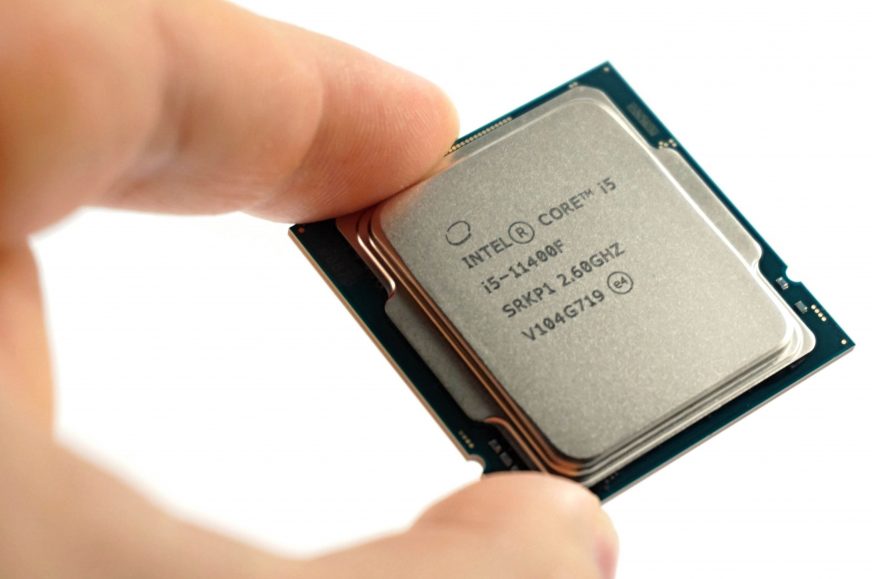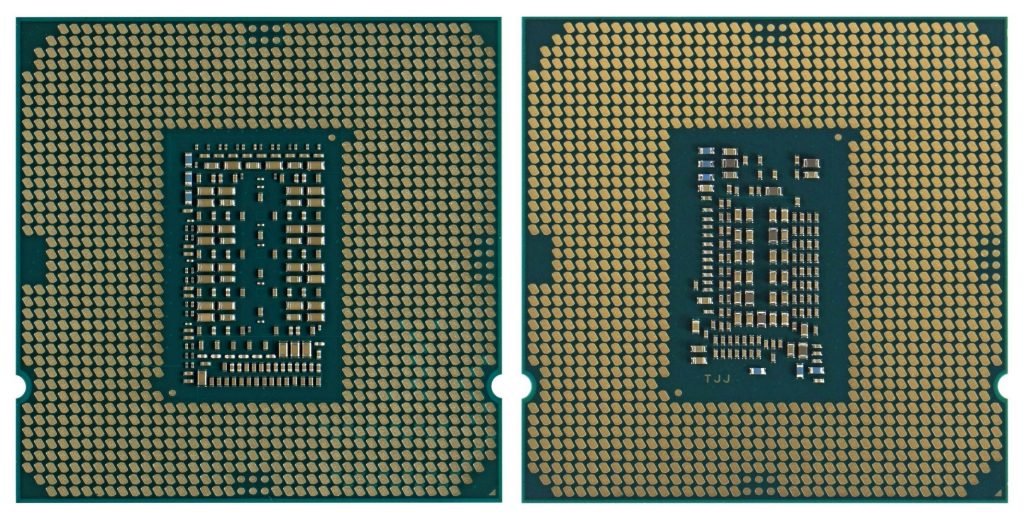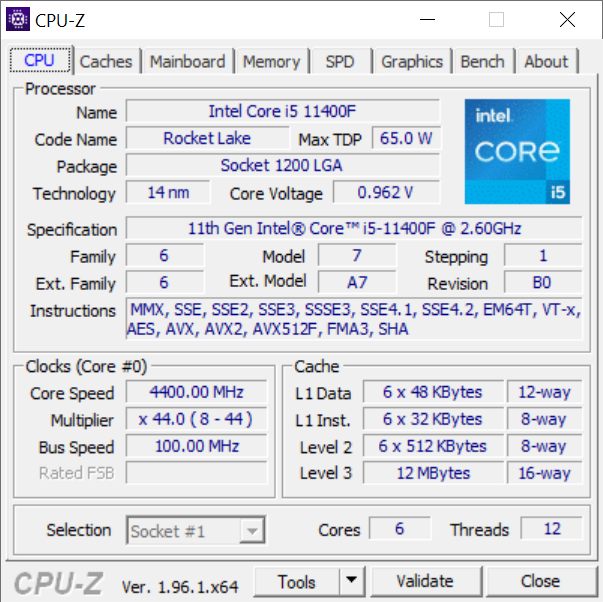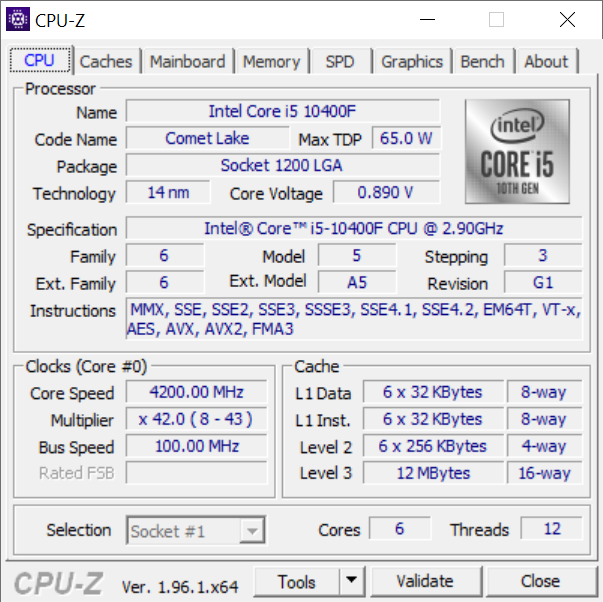Intel Core i5 Rocket and Comet Lake in detail
Intel has practically no direct competition in the segment of cheaper processors. The lowest Core i5 CPUs are significantly cheaper than the Ryzen 5 5600X, which is AMD’s entry level in this class. Therefore, this brotherly duel of the new (11400F) with the older (10400F) Core i5 is more attractive than comparing the processors between the two companies. That was also a wish of one of our readers, and now it is finally coming true.
The class of base Core i5 processors (the cheapest with the lowest base clock) is extremely popular among users. Not just Intel processors, but overall. This is for its unique price-performance ratio.
From a retrospective point of view, it’s a bit of a paradox, because AMD had been leading the lower class segment with affordable prices. However, the situation has changed and if Intel is interesting anywhere, it is this class of cheaper processors under 200 euros. AMD has nothing in this price range yet, at least now.
The cheapest Ryzen 5 (5600X) sells for 280 euros, which is more than you pay for the fastest Core i5 (11600K) Rocket Lake with iGPU. We put two processors from the same camp but from different generations against each other. Many of you certainly own the older Core i5-10400F (Comet Lake) for its cost-effectiveness, and you may have been wondering what you would get by upgrading to Rocket Lake (11400F). The socket (LGA 1200) is the same and the new Core i5-11400F works fully in older motherboards with Intel Z490 chipsets, but especially with the more appropriate (cheaper) B46x or H410.
However, this comparison is also interesting for those who do not yet own a processor, but are considering building a new computer that should be relatively performant, but at the lowest possible price.
Although the Core i5-11400F is a direct successor to the Core i5-10400F, it also has 6 cores and 12 threads. Intel also states the same recommended price, although Rocket Lake is usually about 20 euros more expensive on verified stores. And with a little luck, you can find the Ci5-10400F with twice the price difference (some retailers have the processor in stock from 136 euros).
Intergenerational confrontation is therefore extremely attractive here. It is clear that Rocket Lake will have the highest performance, the manufacturing process (14 nm) did not change, but this processor is already built on the new Cypress Cove architecture with higher IPC and higher clock is also achieved. Compared to the 10400F, the 11400F has almost twice the core size and overall higher power consumption. The question is what the price will be for the higher performance and also whether the performance increase will be worth the higher power draw and price. And, of course, in what application situations, we can’t generalize it.
While the Ci5-10400F supports “only” the PCIe 3.0 bus, with the Ci5-11400F you can use the full potential of a PCIe 4.0 SSD. In this class of processors, however, it is currently more of a theoretical than a practical benefit. Although the ethical lifespan of a processor with PCI Express 4.0 support may still be longer with future generations of graphics cards.
In addition to the tested processors, it should be added that in both cases we have variants with the “F” suffix. This means that they do not have an active graphics core and the multiplier is locked, so only cosmetic overclocking is possible by changing the BCLK.
As for the Core i5-10400F, it is important to note that the test piece has SRH3D Q0 stepping, so the thermally conductive material under the IHS is paste. There are also soldered variants (with codes SRH79/SRH78), but there are a minimum of them in stock and most of you will get the paste version. Its analysis makes more sense. Read more about the differences of the TIM variant in Ci5-10400F in this article.
| Manufacturer | Intel | Intel | |
| Line | Core i5 | Core i5 | |
| SKU | 11400F | 10400F | |
| Codename | Rocket Lake | Comet Lake | |
| CPU microarchitecture | Cypress Cove | Skylake | |
| Manufacturing node | 14 nm | 14 nm | |
| Socket | LGA 1200 | LGA 1200 | |
| Launch date | 03/30/2021 | 05/20/2020 | |
| Launch price | 157 USD | 157 USD | |
| Core count | 6 | 6 | |
| Thread count | 12 | 12 | |
| Base frequency | 2.6 GHz | 2.9 GHz | |
| Max. Boost (1 core) | 4.4 GHz | 4.3 GHz | |
| Max. boost (all-core) | 4.2 GHz | 4.0 GHz | |
| Typ boostu | TB 2.0 | TB 2.0 | |
| L1i cache | 32 kB/core | 32 kB/core | |
| L1d cache | 48 kB/core | 32 kB/core | |
| L2 cache | 512 kB/core | 256 kB/core | |
| L3 cache | 1× 12 MB | 1× 12 MB | |
| TDP | 65 W | 65 W | |
| Max. power draw during boost | 154 W (PL2) | 134 W (PL2) | |
| Overclocking support | No | No | |
| Memory (RAM) support | DDR4-3200 | DDR4-2666 | |
| Memory channel count | 2× 64 bit | 2× 64 bit | |
| RAM bandwidth | 51.2 GB/s | 42.7 GB/s | |
| ECC RAM support | No | Yes | |
| PCI Express support | 4.0 | 3.0 | |
| PCI Express lanes | ×16 + ×4 | ×16 | |
| Chipset downlink | DMI 3.0 ×8 | DMI 3.0 ×4 | |
| Chipset downlink bandwidth | 8,0 GB/s duplex | 4.0 GB/s duplex | |
| BCLK | 100 MHz | 100 MHz | |
| Die size | 276.4 mm² | 149.6 mm² | |
| Transistor count | ? bn. | ? bn. | |
| TIM used under IHS | Solder | Solder or paste (depends on version) | |
| Boxed cooler in package | top-flow with copper core | top-flow with aluminium core | |
| Instruction set extensions | SSE4.2, AVX2, FMA, AVX-512, SHA, VNNI, GNA 2.0 | SSE4.2, AVX2, FMA, SGX | |
| Virtualization | VT-x, VT-d, EPT | VT-x, VT-d, EPT | |
| Integrated GPU | N/A | N/A | |
| GPU architecture | – | – | |
| GPU: shader count | – | – | |
| GPU: TMU count | – | – | |
| GPU: ROP count | – | – | |
| GPU frequency | – | – | |
| Display outputs | – | – | |
| Max. resolution | – | – | |
| HW video decode | – | – | |
| HW video encode | – | – |
- Contents
- Intel Core i5 Rocket and Comet Lake in detail
- Methodology: performance tests
- Methodology: how we measure power draw
- Methodology: temperature and clock speed tests
- Test setup
- 3DMark
- Assassin’s Creed: Valhalla
- Borderlands 3
- Counter-Strike: GO
- Cyberpunk 2077
- DOOM Eternal
- F1 2020
- Metro Exodus
- Microsoft Flight Simulator
- Shadow of the Tomb Raider
- Total War Saga: Troy
- Overall gaming performance
- Gaming performance per euro
- PCMark and Geekbench
- Web performance
- 3D rendering: Cinebench, Blender, ...
- Video 1/2: Adobe Premiere Pro
- Video 2/2: DaVinci Resolve Studio
- Graphic effects: Adobe After Effects
- Video encoding
- Audio encoding
- Broadcasting (OBS and Xsplit)
- Photos 1/2: Adobe Photoshop and Lightroom
- Photos 2/2: Affinity Photo, Topaz Labs AI apps, ZPS X, ...
- (De)compression
- (De)cryption
- Numerical computing
- Simulations
- Memory and cache tests
- Processor power draw trend
- Average processor power draw
- Performance per watt
- Achieved CPU clock speed
- CPU temperature
- Conclusion












